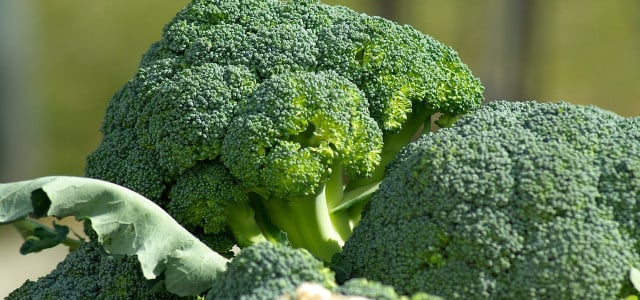Learning how to blanch broccoli will improve its taste and make it easier to store or freeze without losing the beneficial nutritional properties.
When you blanch broccoli, not only will you be reducing its raw, often bitter taste, but you will also preserve its texture and vibrant green coloring. When you are serving broccoli immediately after blanching, you will notice that it will remain crisp, yet will be much more tender when eating.
Blanching your broccoli will suit virtually any dish you might have in mind, whether it be a stir fry, vegetable curry, pasta salad, or veggie platter, so it is a handy thing to learn. Blanching is also a must if you are planning on freezing your broccoli since the process will aid in maintaining its flavor, texture, and color. Learn how to blanch broccoli using three simple methods.
1. Boiling Broccoli



The most common method for blanching broccoli is to boil it. This quick and easy method will teach you how to blanch broccoli in no time.
Instructions:
- Start by bringing 4 quarts of water and 2 teaspoons salt to a rapid boil in a large pot on the stove.
- Fill a big bowl with some ice and cold water.
- Take your broccoli florets and carefully place them into the boiling water, cooking them for 2 to 3 minutes.
- Once time is up immediately remove the broccoli and plunge it into the bowl with ice water.
- When thoroughly cooled, take out your broccoli and drain well.
2. Steaming Broccoli



If you already have a steamer basket for your vegetable dishes, you might opt for using it instead when blanching broccoli. Just keep in mind that the process takes almost twice as long as the boiling method.
Instructions:
- Add roughly two inches of water to a pot that you can snugly fit your steamer basket onto. Your steamer basket should sit at least 3 inches above the bottom of the pot.
- Bring the water to a boil and place your broccoli florets into the basket, making sure they are in an even, single layer so they are steamed properly.
- Cover the pot and continue to cook on medium to high heat. Steaming will take about 1½ times longer than boiling, so you are looking at 5 to 6 minutes ideally.
- Once done, take out your steamed broccoli and place it in your bowl of iced water immediately.
- As soon the broccoli cools completely, drain thoroughly before setting aside for later use.
3. Microwaving Broccoli



The quickest way to blanch your broccoli is to use your microwave, making it the ideal choice for those of us who are always on the go.
Instructions:
- Place your broccoli florets in a single layer in a microwave-safe container.
- Add ¼ to ½ cup water to the container.
- Cover and microwave on high for 2 minutes.
- Uncover and stir the broccoli, and finish by cooking for another minute or so. Note: if in doubt about the length of time, just go with the cooking recommendations on your particular type of microwave.
- Once cooked, stir briefly again and immediately transfer your broccoli into a bowl with iced water.
- When the broccoli is cooled down, drain and set aside for later use.
Blanched Broccoli: Tips & Uses



Learning how to blanch broccoli is only part of it. We’ve gathered some tips to help you make the most of this cruciferous vegetable.
- Size Matters: Before cooking, no matter which way you choose, always cut the broccoli florets into pieces that are all roughly the same size so they cook through evenly.
- Choosing Your Broccoli: Color is a good guide when choosing the best broccoli. Bright green with a firm stalk is ideal, and fresh broccoli should always feel heavy for its size, this means that it has retained its natural water content and should be fresh right the way through.
- Storing & Freezing: Your blanched broccoli will easily last up to four days when properly stored in the refrigerator and when correctly frozen and stored, broccoli will be good to eat even after eight months of storage.
Recipe Suggestions
Fancy a comforting cheesy soup using your broccoli? Or perhaps you prefer more Asian-style dishes with this wonderful stir fry recipe, all you need to do is swap out the peas for broccoli. Try putting a twist on the Italian classic and make some broccoli pesto.
Another great recipe would be this vegan chop suey recipe and broccoli is an excellent addition to a range of different vegetarian and vegan curries.
Kitchen waste is a worrisome issue, but those broccoli scraps need not be thrown away, because you can make fantastic broccoli and cauliflower puree and you can also eat broccoli leaves.
Read more:
- Types of Cabbage: 11 Different Varieties of Cabbage
- Is Broccoli That’s Turning Yellow Safe to Eat?
- Low FODMAP Vegetables: 15 Options for IBS
Do you like this post?







